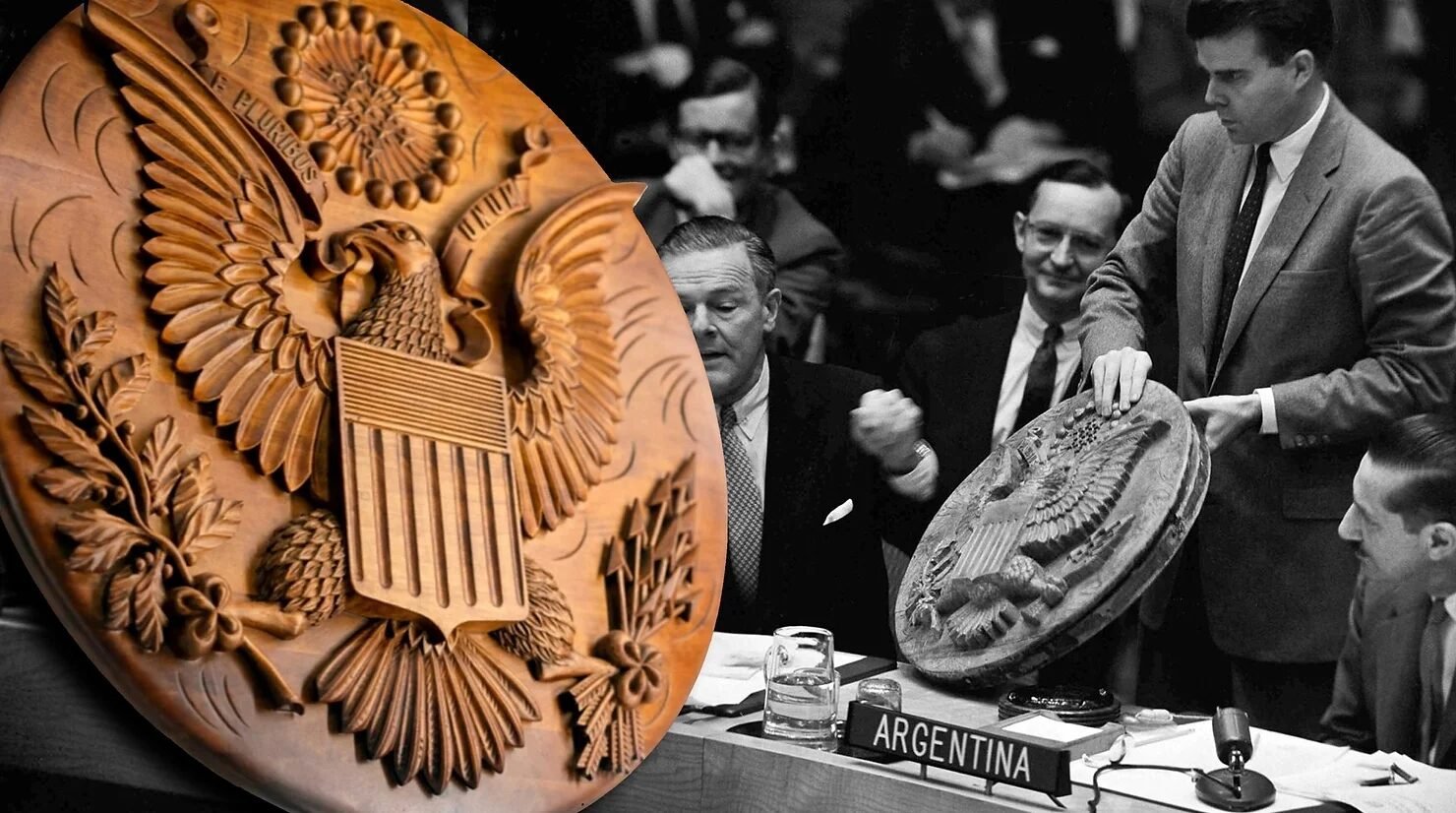The year was 1945 when a token of peace – a wooden replica of the Great Seal – found its way into the U.S. Ambassador’s office in the Soviet Union. Disguised under the veil of diplomacy, this ornamental plaque spent six long years adorning the ambassador’s wall before its clandestine operations were unveiled. It was, in fact, a surveillance device of the Soviet Union, documenting confidential conversations unbeknownst to the American officials. In this enlightening analysis, we journey through time to shed light on the inception of “The Thing” or “The Great Seal Bug” – an espionage marvel that altered the course of Cold War history – and engage in an enlightening conversation with esteemed musician Daniel Malone.

Leon Theremin: The Man Behind The Innovation:
The Theremin, a musical instrument that would forever revolutionize the world of sound, was an invention born from the genius mind of Leon Theremin, or Lev Sergeyevich Termin as he was known in his homeland. First developed in 1919 as a byproduct of proximity sensor research commissioned by the Soviet Government, the Theremin found an unexpected fame among musicians and sci-fi enthusiasts alike. Yet, it was Theremin’s unwelcome return to the Soviet Union and his forced contribution to the secret operations of the then-NKVB that led to the creation of one of the most innovative espionage tools in history.
The Great Seal: A Trojan Horse:

1945 marked an event of understated significance when the Vladimir Lenin All-Union Pioneer Organization, an influential youth group in the Soviet Union, presented a meticulously hand-crafted plaque of the Great Seal to U.S. Ambassador Averell Harriman. Deceivingly innocent, this ‘gift’ housed a sophisticated surveillance device within, sitting discreetly on the ambassador’s office wall, siphoning off confidential discussions for almost seven years.
Espionage Methods: A Study in Ingenious Design:
The history of espionage is rife with elaborate tales of concealed surveillance devices – from transmitters camouflaged as dog feces during the Korean War to a listening device hidden within a tree stump near Moscow. However, “The Thing” stands apart in its ingenious design and efficacy. A unique blend of audacity and sophistication, it remains a milestone in the history of espionage gadgetry.
Unearthing ‘The Thing’: An Exposé:

The saga of ‘The Thing’ takes a dramatic turn in 1951 when a British government radio operator stumbles upon an unexpected voice – their own Air Attaché – on the Russian air traffic channels. The subsequent investigation involving multiple embassies led to the startling revelation of ‘The Thing’ embedded within the Great Seal. The sophisticated design of the device, activated by specific radio frequencies and sound waves, and its ability to function without any external power, displayed a remarkable use of applied electronics, underscoring Leon Theremin’s mastery over the field.
The Legacy and Impact of ‘The Thing’:
The scope of the intelligence gathered through ‘The Thing’ remains shrouded in mystery. But its existence spurred numerous developments in the world of espionage, directly influencing the design of the British MI5’s SATYR device. Its discovery, kept under wraps until the U-2 incident in 1960, led to a dramatic display at a United Nations Security Council meeting, forever changing the public’s perception of international diplomacy and espionage.
The tale of ‘The Thing’ serves as a potent reminder of the intricate interplay between technology, politics, and secrecy in the global landscape. This narrative unravels the nuances of international diplomacy and the intricate game of spy-craft during the Cold War era. As we delve deeper into the enigmatic world of the Theremin – the instrument that provides the melodious undertones to this saga, we cordially invite you to join our enlightening conversation with the renowned musician, Daniel Malone.






















+ There are no comments
Add yours